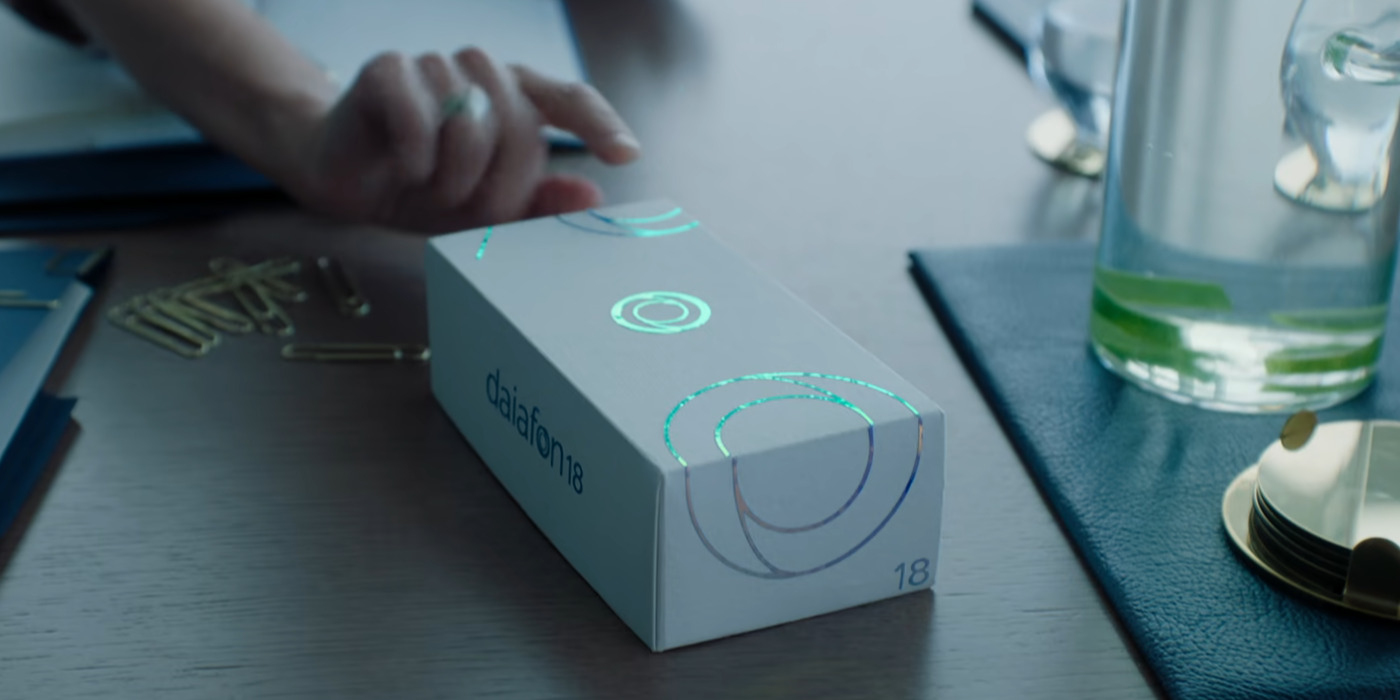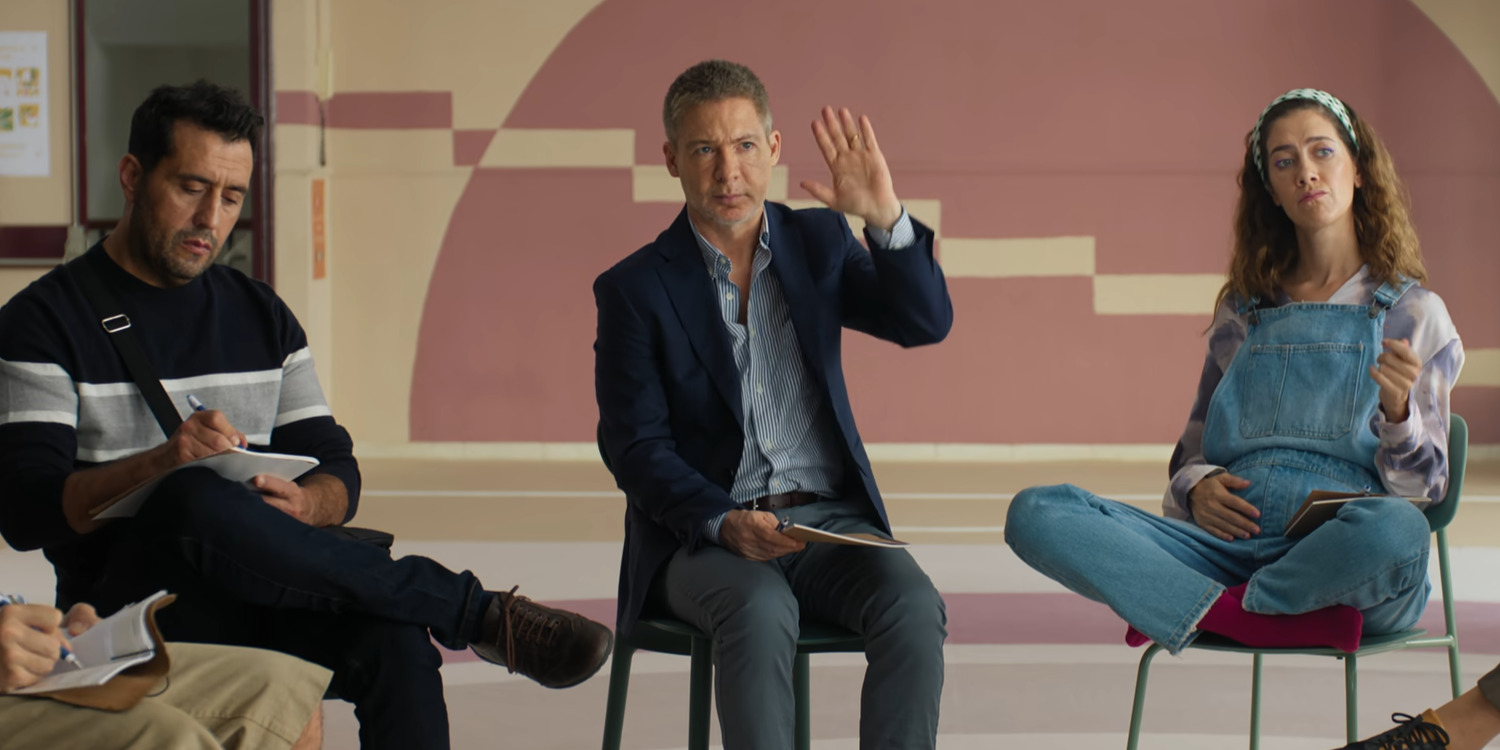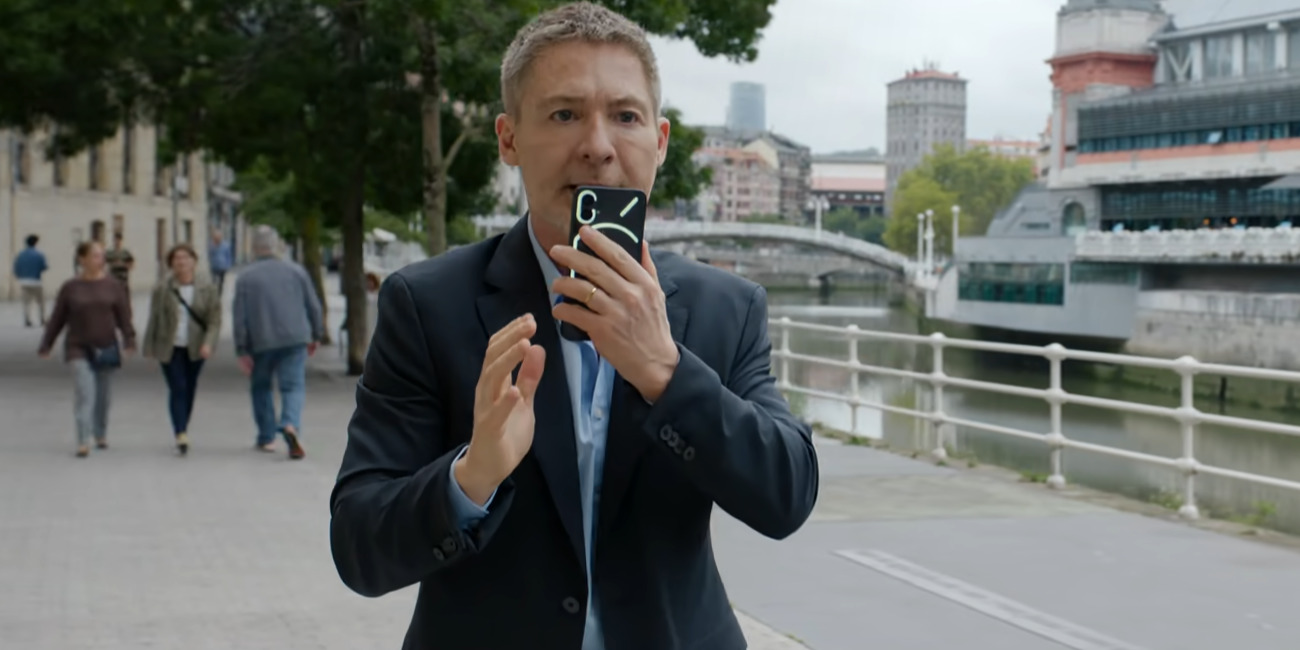The Spanish comedy film ‘I Can’t Live Without You’ presents a story that highlights the pitfalls of the modern issue surrounding the population’s cresting problem with smartphone addiction. The story’s protagonist, Carlos Mendoza, is a middle-aged workaholic who spends more time looking down at his phone screen than conversing with his own wife, Adela. As a result, Adela grows tired of his neglect and decides to leave him. Thus, Carlos finally realizes the gravity of his obsession with his digital devices and enrolls in the La Terapia de Rosa phone detoxing program to show his dedication to his wife. However, hijinks ensue when an upcoming promotion at work draws him back to his cell phone. In the narrative’s depiction of Carlos’ phone addiction, his Daiafon device and Rosa’s therapy program remain the most crucial tools. Therefore, viewers must be intrigued about their respective roots in reality.
Daiafon 17 and 18 are Fictional Devices Confined to the Film
‘I Can’t Live Without You’ fictionalizes Carlos’ experiences as a businessman perpetually attached to his phone—a premise that inherently grounds his storyline in mundane reality. Nevertheless, despite its grounded nature, the world the protagonist occupies remains similarly fictitious, with world-building details that have no concrete counterparts in real life. Consequently, the Daiafon phone with its models 17 and 18 also becomes a fictionalized device solely created to serve their purposes within Carlos’ story.

The Daiafon’s physical appearance—highlighted by complex industrial designs on the back cover—seems to be inspired by the Nothing Phone, an Android smartphone by the eponymous London-based brand. As such, it could be possible that the film models its on-screen device after the real-life phone. Nonetheless, no official connection persists between Daiafon and the Nothing Phone. Instead, the former seems to be a universal stand-in for the phone industry that the narrative uses to feed its commentary about the current reality.
One of the most notable aspects of Daiafon is its lightning-quick rollout of new consecutive phone models. As such, within the film’s span of a few months, Carlos goes through three different Daiafon models. This is an exaggerated reference to the reality of the technology industry, which churns out new models— be it Apple’s iPhones, Samsung’s Galaxy S-series, or Google’s Pixel—every year like clockwork.
Alternatively, the film also utilizes Daiafon devices to highlight people’s growing reliability on their smartphones. Throughout Carlos’ narrative, the man and many others around him remain obsessed with their Daiafon devices to the point of prioritizing their virtual worlds over the reality in front of their eyes. As such, the Daiafon becomes an instrumental tool in depicting a severe case of smartphone addiction, an impulse control problem that persists in real life. Thus, even though Daiafones aren’t real phones, their on-screen portrayal reflects a realistic issue.
La Terapia de Rosa is a Fictional Therapy Program
Much like other elements within ‘I Can’t Live Without You,’ La Terapia de Rosa—translated to Rosa’s Therapy— is another fictional detail that remains confined within the film’s on-screen universe. The program comes into the narrative after Carlos realizes the depth of his smartphone addiction and decides to seek help for the same. Thus begins his journey of detoxing from his device as he joins Rosa and her support group to train his impulses against constantly reaching for his Daiafon. Although a detoxing program identical to La Terapia de Rosa doesn’t exist in reality, there are several other resources particularly constructed to aid in Smartphone Addiction Therapy.

With the turn of the century, as technology began rapidly advancing, people started developing a psychological condition, Nomophobia, also known as NO MObile PHone PhoBIA. The term encapsulates an individual’s fear of being detached from their phone and their connectivity. In recent years, as people have started relying more and more on their smartphone devices, the condition has gained more mainstream global relevancy. Even though people rarely seek out treatment for this phobia, cognitive-behavior therapy, which encourages communication and embracing coping skills, showcases substantial results.
Read More: Best Comedy Movies on Peacock


You must be logged in to post a comment.